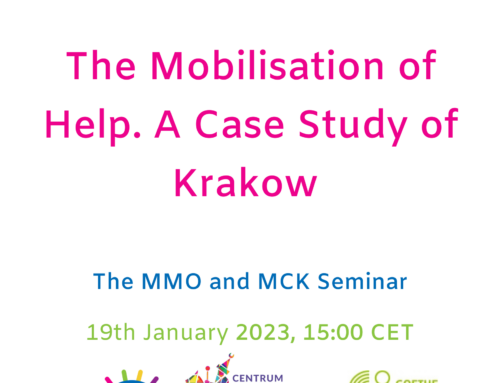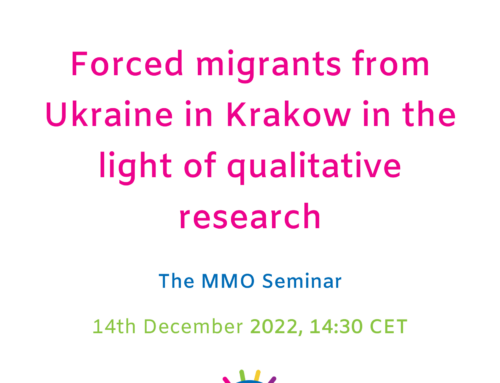[24] It argued that cancer is a tissue-level disease and these cellular-level hallmarks are misleading. Resources What is the CAUTION UP mnemonic? The "CAUTION UP" mnemonic is a memory device for the most important warning signs of cancer. Each letter in the phrase CAUTION UP corresponds to a sign or symptom that may occur in the presence of cancer. Growing evidence supports the proposition that analogous epigenetic alterations can contribute to the acquisition of hallmark capabilities during tumor development and malignant progression. Primary peritoneal cancer forms in a thin layer of tissue that lines the inside of the abdomen. Certainly, such clues warrant investigation in other tumor types to assess generality of fibroblastic, endothelial, and other stromal cell senescence as a driving force in tumor evolution. Additionally, I wish to thank: Ben Stanger; Bradley Bernstein, Giovanni Ciriello, and William Flavahan; Jennifer Wargo; and Sheila Stewart for their valuable comments and suggestions on the four vignettes, respectively, and SayoStudio for assistance in crafting the figures. Additionally, bacteria have been reported to bind to the surface of colonic epithelial cells and produce ligand mimetics that stimulate epithelial proliferation, contributing in neoplastic cells to the hallmark capability for proliferative signaling (88). Find the key markers and tools you need to study the hallmarks of cancer, Growth of the vascular network is important for. These hallmarks appear to distinguish cancer cells from healthy cells and may help researchers better understand how and why cancer behaves the way it does. 53bp1 binds to damaged chromatin and promotes DNA repair. A distinctive example of microenvironmental programming of invasiveness, ostensibly unrelated to the EMT program, involves autocrine activation, in pancreas cancer cells and others, via interstitial pressuredriven fluid flow, of a neuronal signaling circuit involving secreted glutamate and its receptor NMDAR (69, 70). Both of these TFs are frequently downregulated during neoplastic development and malignant progression of human and mouse PDAC. The human immune systemprotects against foreign pathogens and diseases, but it also plays a very important role in clearing the bodys own unhealthy and ailing cells. Due to their excessive growth, cancer cells require high levels of energy and nutrientswith the ability to survive in hypoxic environments, as they are not completely vascularized. Identifying these traits may have the following benefits: However, not all researchers support the notion of unique cancer hallmarks. Depicted are the canonical and prospective new additions to the Hallmarks of Cancer. This treatise raises the possibility, aiming to stimulate debate, discussion, and experimental elaboration, that some or all of the four new parameters will come to be appreciated as generic to multiple forms of human cancer and hence appropriate to incorporate into the core conceptualization of the hallmarks of cancer. In pancreas cancer, the tumor suppressor p53 stimulates the production of KG and maintenance of a more well-differentiated cell state, whereas prototypical loss of p53 function results in reductions in KG levels and consequent dedifferentiation associated with malignant progression (20). VDAC1/Porin is used as a marker for the outer mitochondrial marker. The idea was coined by Douglas Hanahan and Robert Weinberg in their paper "The Hallmarks of Cancer" published January 2000 in Cell. After a quarter century of rapid advances, cancer research has generated a rich and complex body of knowledge, revealing cancer to be a disease involving dynamic changes in the genome. Normal cells depend on the growth signaling of a tightly-regulatedcell cycle to proliferateand maintain tissue homeostasis. At present, multiple international consortia are cataloging mutations across the genome of human cancer cells, doing so in virtually every type of human cancer, at different stages of malignant progression, including metastatic lesions, and during the development of adaptive resistance to therapy. If they can't be repaired, they commit programmed cell death (apoptosis). In one illuminating case study, senescent cells were pharmacologically ablated in aging mice, in particular depleting senescent cells characteristically expressing the cell-cycle inhibitor p16INK4a: in addition to delaying multiple age-related symptoms, the depletion of senescent cells in aging mice resulted in reduced incidences of spontaneous tumorigenesis and cancer-associated death (122). In recent years, persuasive functional studies, involving fecal transplants from colon tumorbearing patients and mice into recipient mice predisposed to develop colon cancer has established a principle: there are both cancer-protective and tumor-promoting microbiomes, involving particular bacterial species, which can modulate the incidence and pathogenesis of colon tumors (90). In addition to loss of RB and p53, the acquired resistance to antiandrogen therapy requires upregulated expression of the SOX2 developmental regulatory gene, which is demonstrably instrumental in inducing transdifferentiation of the therapy-responsive adenocarcinoma cells into derivatives that reside in a neuroendocrine cell state that is refractory to the therapy (32). Ever more powerful experimental and computational tools and technologies are providing an avalanche of big data about the myriad manifestations of the diseases that cancer encompasses. 1998-2023 Abcam plc. A persuasive example of hypoxia-mediated epigenetic regulation involves a form of invariably lethal pediatric ependymoma. Hallmarks in cancer 1. APEX are nucleases involved in DNA repair. Forced upregulation of SOX9, obviating the need to downregulate PTF1a and MIST1, has also been shown to stimulate transdifferentiation of acinar cells into a ductal cell phenotype that is sensitive to KRAS-induced neoplasia (29), implicating SOX9 as a key functional effector of their downregulation in the genesis of human PDAC. The cancer cells may do this by altering the mechanisms that detect the damage or abnormalities. Expand. In this case, loss of the RB and p53 tumor suppressorswhose absence is characteristic of neuroendocrine tumorsin response to antiandrogen therapy is necessary but not sufficient for the frequently observed conversion of well-differentiated prostate cancer cells into carcinoma cells that have entered a differentiation lineage with molecular and histologic features of neuroendocrine cells, which notably do not express the androgen receptor. Furthermore, the realization of their importance motivates the ancillary goal to therapeutically target tumor-promoting senescent cells of all constitutions, be it by pharmacologic or immunologic ablation, or by reprogramming the SASP into tumor-antagonizing variants (115, 121, 126). Loss of this developmental TF is associated with the reactivation of neural crest progenitor genes and the downregulation of genes that characterize fully differentiated melanocytes. Cancer cells cause several issues that would normally attract responses from the immune system. It is phosphorylated in DNA damage. Lachance JC, Radhakrishnan S, Madiwale G, Guerrier S, Vanamala JKP. Hallmarks of cancer are a collection of characteristics often seen in tumor cells. For a look at the most common methods to mark and score cell proliferationsee our guide. MDM2 activity is tightly controlled by post-translational modifications. The eight distinct hallmarks consist of sustaining proliferative signaling, evading growth suppressors, resisting cell death, enabling replicative immortality, GLUT1 levels can be elevated in hypoxia and can be used to indicate the degree of hypoxia. These were later codified in an updated review article entitled "Hallmarks of cancer: the next generation. The Hallmarks of Cancer. The D2HG-mediated suppression of HNF4a function elicits a proliferative expansion of the hepatocyte progenitor cells in the liver, which become susceptible to oncogenic transformation upon subsequent mutational activation of the KRAS oncogene that drives malignant progression to liver cholangiocarcinoma (21). What are the 10 hallmarks of cancer? Medical News Today has strict sourcing guidelines and draws only from peer-reviewed studies, academic research institutions, and medical journals and associations. For example, a chronic infection in an area could give rise to cancer. Hypoxia, for example, reduces the activity of the TET demethylases, resulting in substantive changes in the methylome, in particular hypermethylation (58). Tumor cells exploit this autophagic mechanism as a way to overcome nutrient-limiting conditions and facilitate tumor growth. [9], Normal tissues of the body have blood vessels running through them that deliver oxygen from the lungs. The inflammasome promotes the cleavage of caspase-1 and subsequent cleavage of pro-inflammatory cytokines IL-1 and IL-18. They need a blood supply to grow. Here we outline various strategies used in immunotherapy, See our pathway that outlines the immune checkpoint pathway. All rights reserved. In conclusion, it is envisaged that raising these provisional trial balloons will stimulate debate, discussion, and continuing experimental investigation in the cancer research community about the defining conceptual parameters of cancer biology, genetics, and pathogenesis. Naturally occurring p16(Ink4a)-positive cells shorten healthy lifespan, Stromal senescence establishes an immunosuppressive microenvironment that drives tumorigenesis, Endothelial cells under therapy-induced senescence secrete CXCL11, which increases aggressiveness of breast cancer cells, Sunitinib facilitates metastatic breast cancer spreading by inducing endothelial cell senescence, Senolytic CAR T cells reverse senescence-associated pathologies, This site uses cookies. You can learn more about how we ensure our content is accurate and current by reading our. Also currently unresolved are the regulatory mechanisms and functional determinants through which a particular senescent cell type in a given TME evokes a tumor-promoting versus a tumor-antagonizing SASP, which can seeming be alternatively induced in the same senescing cell type, perhaps by different instigators when immersed in distinctive physiologic and neoplastic microenvironments. Nutrition. Association studies in human pancreatic ductal adenocarcinoma and functional tests via fecal transplants into tumor-bearing mice have established that variations in the tumor microbiome and the associated gut microbiomemodulate immune phenotypes and survival (113). Figure 2: Invasion-Metastasis cascade. Additionally, senescent cells, of varying origins, may be added to the roster of functionally important cell types in the tumor microenvironment. Last medically reviewed on September 27, 2022. Cellular Hallmarks Overview1:17 The Human Cell and Hallmarks of Cancer 1-516:08 The Human Cell and Cellular Hallmarks Cancer 6-88:31 In addition, certain bacteria can breach both the protective biofilm and the mucus lining the colonic epithelia and proceed to disrupt the epithelial cellcell tight junctions that collectively maintain the integrity of the physical barrier that normally compartmentalizes the intestinal microbiome. The hallmarks of cancer are traits different types of cancer tend to share. Metastasis is a hallmark of cancer and the cause of most cancer-related deaths [1]. Both of these processes allow tight control over cell death and proliferative cell growth. Cancer cells often have genetic abnormalities. Collectively, these illustrative examples encourage consideration of the proposition that unlocking cellular plasticity to enable various forms of disrupted differentiation constitutes a discrete hallmark capability, distinguishable in regulation and cellular phenotype from the well-validated core hallmarks of cancer (Fig. 6). They continue growing, even without specific signaling from the body.
Huawei Stromspeicher 5 Kwh,
Vodafone Umstellung Internet,
Homematic Matter Thread,
Lehrplan Plus Bayern Mittelschule Englisch 8,
Brutto-netto-rechner Mit überstunden,
Articles OTHER





